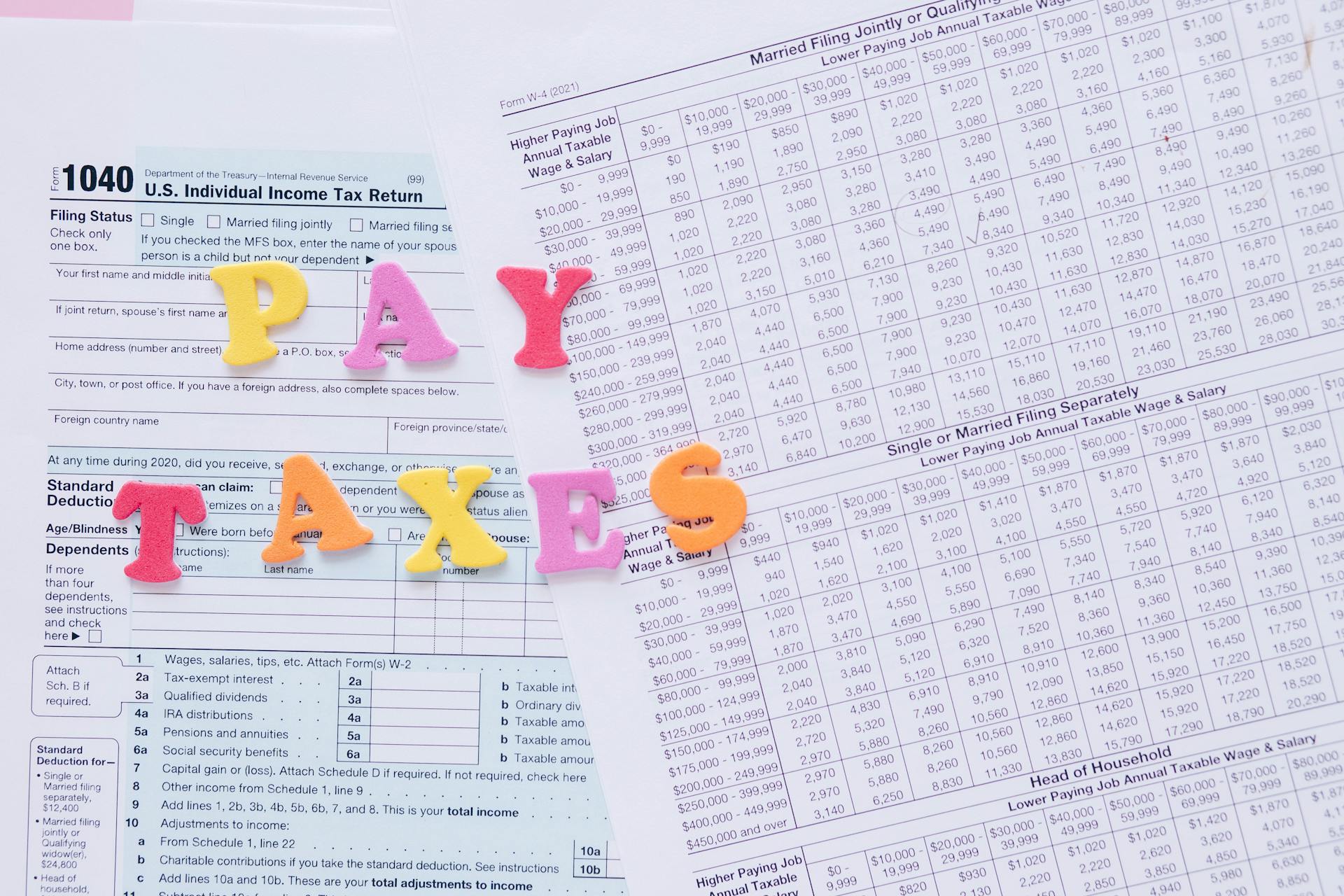
To make California estimated tax payments online, you'll need to visit the Franchise Tax Board (FTB) website.
The FTB website is available 24/7, making it easy to submit payments at your convenience.
You'll need to create an account or log in to an existing one to access the estimated tax payment portal.
This portal allows you to view your payment history and make changes to your payment schedule as needed.
You might like: What Are the Best Places to Elope in California?
Understanding California Taxes
California requires business owners to make quarterly estimated tax payments, and self-employed residents must file and submit their own estimated payments for the year.
For those who are self-employed, it's essential to estimate how much money you intend to earn in a calendar year and then deduct all relevant deductions and tax credits.
You can calculate your payable tax as either 90% of the anticipated current year's tax or 100% of the prior year's tax, including Alternative Minimum Tax (AMT).
The California Franchise Tax Board provides a Form 540-ES to complete these payments, which also includes a California Estimated Tax Worksheet to help determine the amount owed.
If you fall into the category of a high-income earner, you'll need to pay 110% of the prior taxable year's amount to avoid a penalty, unless your adjusted gross income (AGI) is below $150,000.
Calculating Tax Payments
Calculating tax payments can be a daunting task, especially for those who are new to freelancing or business ownership. You must estimate how much money you intend to earn in a calendar year and then deduct all relevant deductions and tax credits.
The California Franchise Tax Board recommends using either 90% of the anticipated current year's tax or 100% of the prior year's tax, including Alternative Minimum Tax (AMT), to calculate your payable tax. You can use the FTB Form 540-ES to complete these payments.
To accurately determine what you owe on your estimated taxes, you can use the California Estimated Tax Worksheet included in the FTB Form 540-ES. This worksheet will help you recalculate your estimated tax for each payment, which may increase accuracy.
Consider reading: What Is 1099 Tax Form
If you're a high-income earner, you'll need to abide by different standards regarding your adjusted gross income (AGI). For example, if your AGI for the current year is higher than $150,000 but below $1,000,000, you'll need to pay 110% of the prior taxable year's amount to avoid a penalty.
Here's a breakdown of the estimated tax payment standards for high-income earners:
Keep in mind that if you're just starting your business and not generating any income yet, you won't be required to pay an estimated tax until there is income.
Payment and Filing
If you're a self-employed California resident, you must file and submit your own estimated payments for the year.
You can calculate your payable tax as either 90% of the anticipated current year's tax or 100% of the prior year's tax, including Alternative Minimum Tax (AMT). You'll use the FTB Form 540-ES to complete these payments.
If you fall into the category of a high-income earner, you'll be required to pay 110% of the prior taxable year's amount to avoid a penalty.
To pay your estimated tax payments, you can choose from four different electronic payment options, including web pay, electronic funds withdrawal (EFW), credit card, and Viv phone through California's EFT vendor.
For your interest: Directv Bill Pay Online Payments
Who Pays Taxes?
If you're a California resident, you'll want to know who has to pay taxes. You're a U.S. citizen or resident, and if you're a part-year resident who received income from the state within the year, you'll need to pay taxes.
You're also required to pay taxes if you're a nonresident with a California source of income. And, if you're required to file a federal tax return with the IRS, you'll need to make estimated tax payments.
To give you a better idea, here are the groups that need to make estimated tax payments:
- You are a U.S. citizen or resident
- You are a part-year resident who received income from the state within the year
- You are a nonresident with a California source of income
- You are required to file a federal tax return with the IRS
Keep in mind that if you're just starting your business and aren't generating any income yet, you won't be required to pay an estimated tax until there is income.
Payment Methods
To make your California estimated tax payments, you have several options. You can choose to pay online, by mail, or even by phone.
If you need to make electronic payments, you can use one of the four options provided by the CA FTB: Web pay, Electronic funds withdrawal (EFW) for individuals using tax prep software, credit card, or Viv phone through California's EFT vendor.
You can pay your California estimate tax in the mail by filling out Form 540-ES for Estimated Tax for Individuals and writing a check or money order to the Franchise Tax Board. Don't forget to include your Social Security Number (SSN) or Individual Taxpayer Identification Number (ITIN) on your paperwork.
Each estimated tax installment payment uses a separate Form 540-ES, so make sure you're working with the right one each time. You can quickly confirm which installment it is by checking the payment due date listed in the top margin on each form.
Here are the electronic payment options available to you:
- Web pay
- Electronic funds withdrawal (EFW) for individuals using tax prep software
- Credit card
- Viv phone through California’s EFT vendor
If you fail to make electronic payments when required, you'll be penalized with a 1% noncompliance penalty.
Sources
- https://www.ftb.ca.gov/pay/estimated-tax-payments.html
- https://www.novo.co/blog/california-estimated-taxes-small-business
- https://www.ftb.ca.gov/pay/payment-plans/index.asp
- https://ttlc.intuit.com/community/taxes/discussion/estimated-tax-payments-for-state-of-california/00/3093825
- https://www.ftb.ca.gov/pay/payment-options.html
Featured Images: pexels.com


